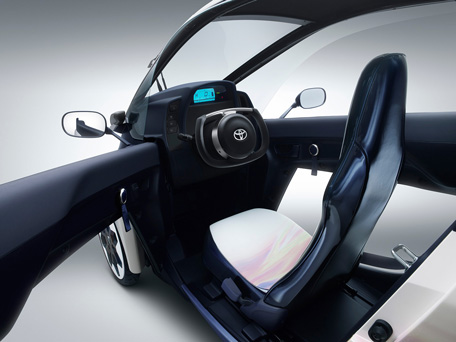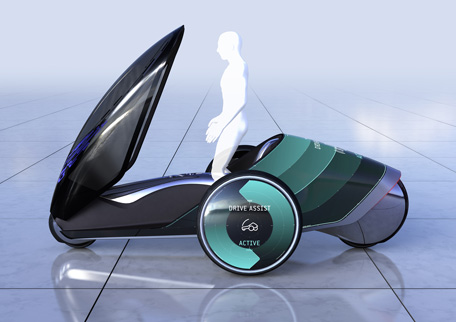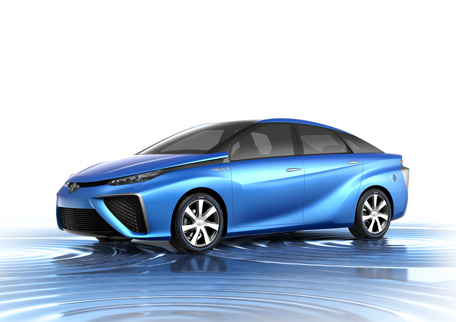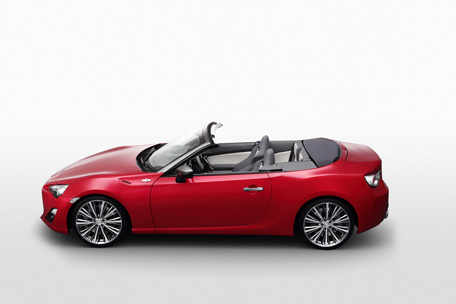- City Fajr Shuruq Duhr Asr Magrib Isha
- Dubai 04:33 05:50 12:21 15:48 18:46 20:03

Toyota Motors has announced that it plans to launch the Hydrogen Fuel Cell vehicle (FCV) by 2015.
Capable of achieving 500kms at a stretch the vehicle can be recharged in just three minutes.

Mercedes Benz had introduced its first Fuel Cell vehicle the F-Cell in 2002 and subsequently released upgraded models. Currently, the vehicles are leased to select clients in Europe and US. Several other automobile firms have announced plans to launch Fuel cell vehicles during the coming years.
Toyota, meanwhile, is showcasing the concept car along with four other innovative models at the Tokyo Motor Show including a vehicle which can be maneuvered by a driver by moving the body weight in different directions instead of using the steering.

The FCV, according to Toyota is uniquely built keeping in mind its energy requirements.
Toyota has also built the exterior design in line with the characteristics of a fuel cell vehicle: the transformation of air into water as the system produces electricity, and the powerful acceleration enabled by the electric drive motor.
“The bold front view features pronounced air intakes, while the sleek side view conveys the air-to-water transformation with its flowing-liquid door profile and wave-motif fuel cap. The theme carries to the rear view, which conveys a catamaran’s stern and the flow of water behind,” Toyota said in its statement.

Toyota has also designed the vehicle in such a way that it can accommodate the light-weight fuel cell stacks and hydrogen tanks in a compact space. The vehicle can accommodate four occupants.
The FV2 is another concept car being unveiled by Toyota as it attempts to build a more physically and emotionally attachment between the vehicle and the driver. The car also has the ability to change its body colour and exterior display at will.

The vehicle can not only be guided based on the driver shifting his body weight it also tries to emotionally connect to the driver by assessing his mood and can determine the driving history to determine the destination.
The vehicle is operated by the driver shifting his or her body to move the vehicle forward and back, left and right rather than using a steering wheel.
What’s more the vehicle even connects to other vehicles on the road by using intelligent transport system technology.
The Toyota FV2 helps enable safe driving by providing a wide variety of safety information, including advance warnings about vehicles in blind spots at intersections.
Toyota says the idea is to envision an ever-developing driver-vehicle relationship similar to the relationship of trust and understanding that a rider might have with his or her horse.
The Toyota Heart Project is a new communication research project which through the Kirobo and Mirata humanoid communication robots is trying to incorporate technologies for communication and artificial intelligence.
The programme is based on the premise that humans and artificial intelligence will be able to engage in emotional communication, including expressions, gestures, and recollection of past events.
The FV2 has tried to incorporate technology from the “Toyota Heart Project”, According to the company the vehicle uses voice and image recognition to determine the driver’s mood, accumulated driving history to suggest destinations, and driving skill information to assist the user.
In addition, an augmented reality (AR)1 display on the windshield, the body colour and exterior display can be changed at will, creating a more intimate relationship between vehicle and driver.
For those who want to experience the concept of the FV2, Toyota has also released smartphone applications on Android and iOS.
The Toyota i-Road is a hybrid between a motorcycle and a car, and will be launched next year for testing.
![]() Follow Emirates 24|7 on Google News.
Follow Emirates 24|7 on Google News.